Bees make honey, honey makes great beer. Nick Harman goes to meet the buzzing workers in South London and of course taste some of the honey beer.
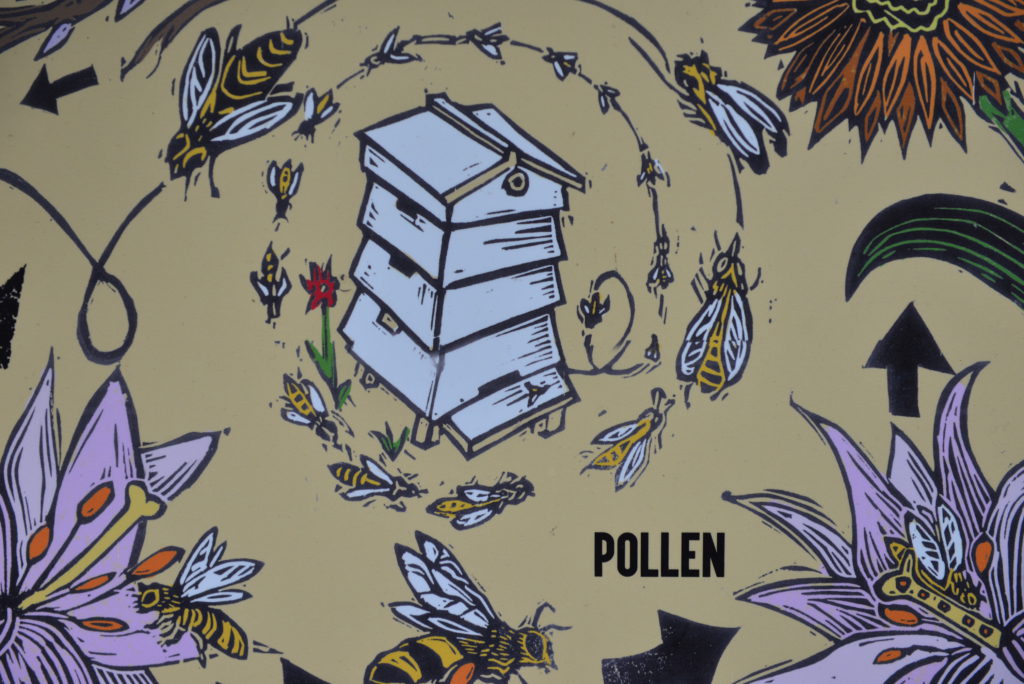
I’ll just make sure the Queen is still in there before I put the frame back in the hive,’ says Barnaby Shaw, Lead director at Bee Urban, as we observe apprehensively from inside our bee suits.
It’s spitting with rain and the bees seem spitting angry too. They need to have their home put back together asap.’It’s a bit late in the day to disturb them’, says Barnaby peering closely at the frame, still looking for the Queen who will be marked with a coloured dot.’The bees are usually active between about 10am and 4pm and out foraging. Now they need to rest’.
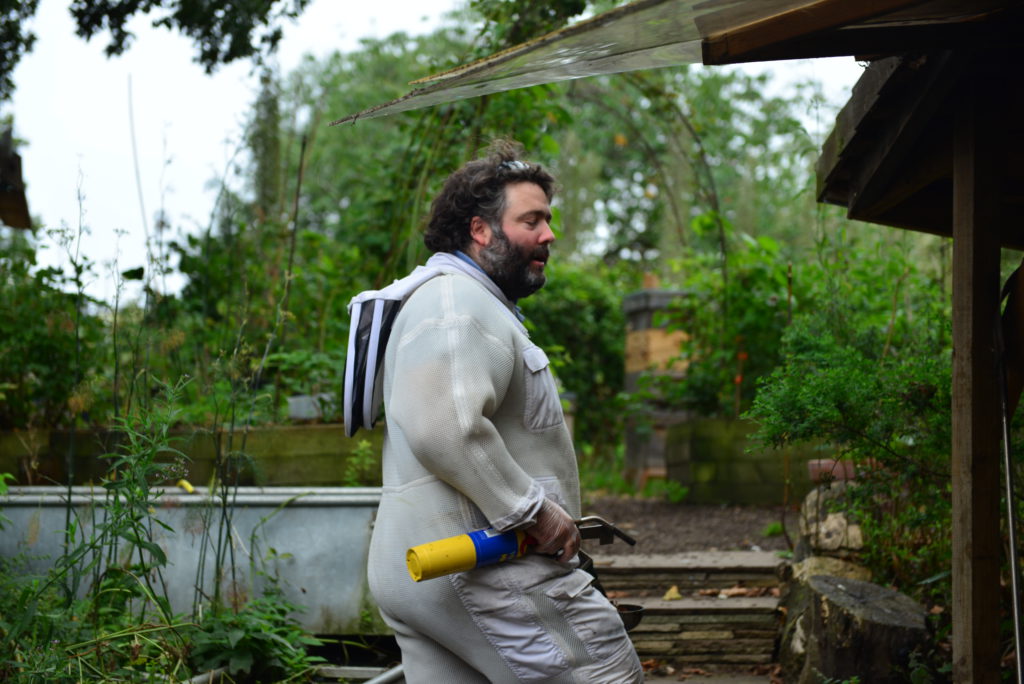
The ones trying to get at my face could certainly give it a rest. Although I’m totally secure behind my spaceman mask, the bees are right up in my grill and while I know they can’t get past the mesh visor, I still feel a bit uneasy. And is that something crawling up my ankle?
After a while I become more relaxed. Bees aren’t like wasps, they aren’t evil monsters hell bent on spoiling your day. They’re busy bees and only get annoyed when their hive is disturbed. Worker bees, the ones flying around us, feed and look after the larvae, tend to the queen, clean the hive, collect food, build honeycomb, and guard the colony against intruders.
Barnaby gives the hive a shot of wood smoke.’It makes the bees think there’s a forest fire, so they eat a load of honey to’save’ it and that makes them a bit sleepy, Like us after a big meal.’ And as we watch, the buzzing diminishes.
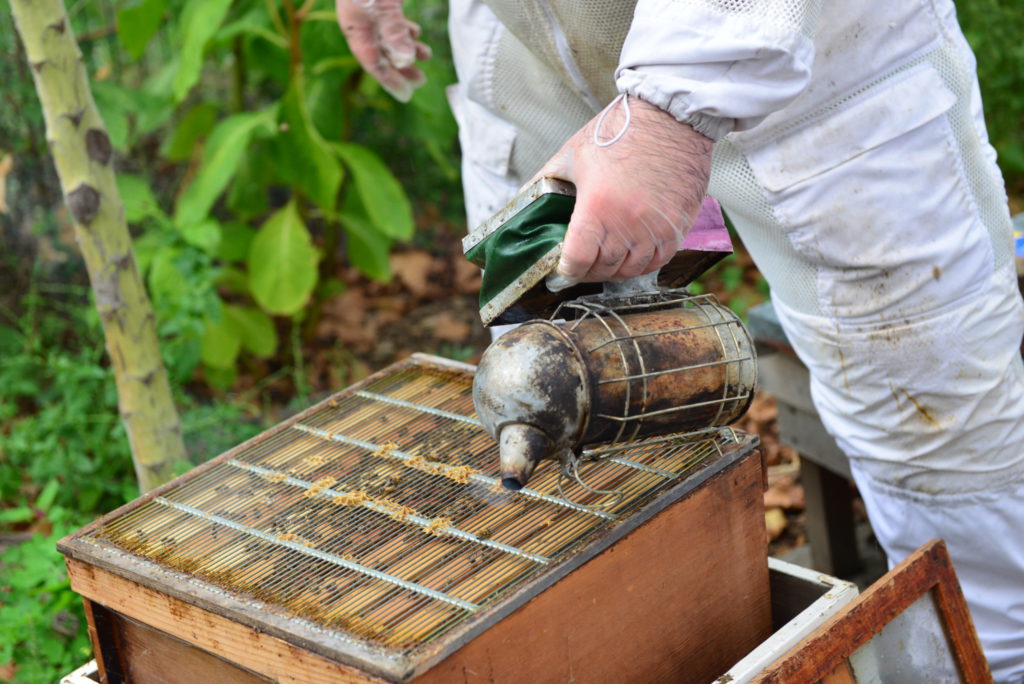
He quickly rebuilds the hive, having decided the Queen, the only fertile member who can lay up to 1500 eggs in spring and summer, is in there even though he can’t see her, section by section.
Modern hives are multi-story buildings. The bottom part has the entrance, the section above the brood is where the bees live, above that is the section where the beeswax honeycomb forms on removable frames and then there’s the lid.
A collection of hives is known as an’apiary’ and this one is in Kennington Park in South London, a large green area which, despite its size, is not all that known outside the area.
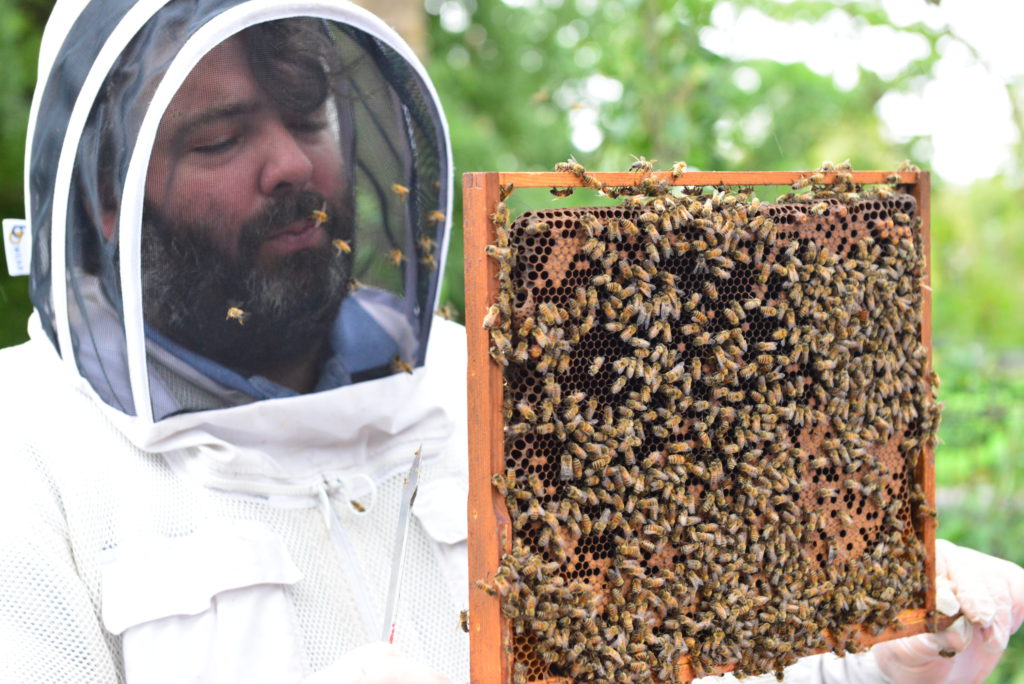
Behind the park cafe is Bee Urban. It’s a social enterprise that works with communities to improve the environment and focuses on responsible urban beekeeping, horticulture and community growing.
Which is why the bee hives are set in a large and attractive’allotment’.The site was derelict and a mess before Bee Urban, working with local volunteers, got rid of the old structures and built environmentally friendly, horticulturally rich buildings and growing spaces instead. The site is now officially called The Hive.
Volunteers from the community are encouraged and they have a website where you can find out more.The honey is sold from the cafe but something else happens to it, it’s used to make honey beer.
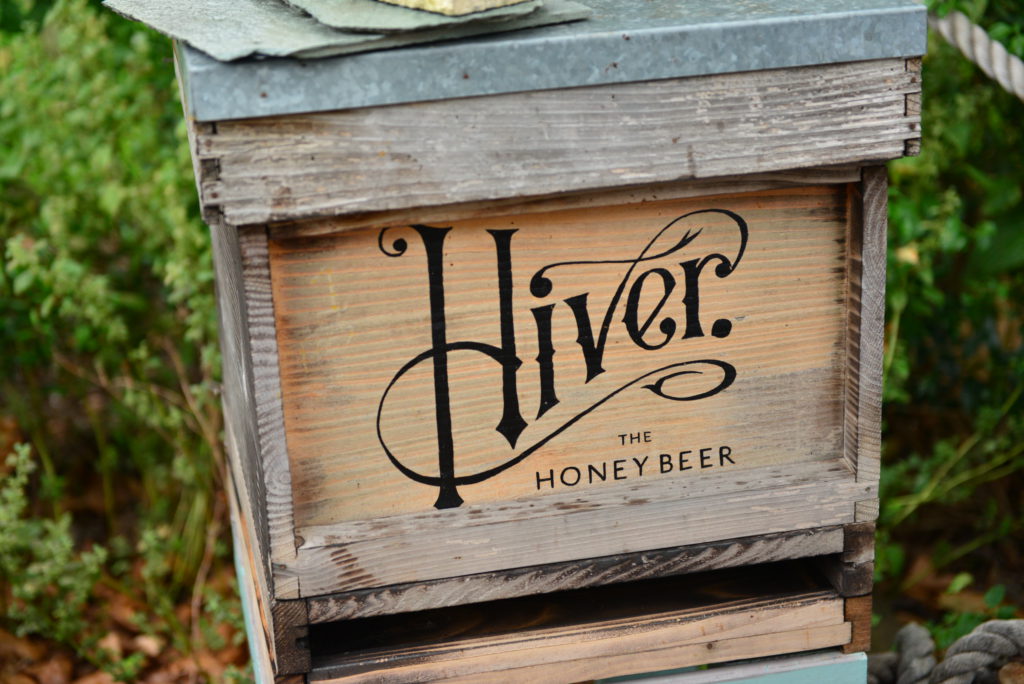
Hiver Beer is the main customer, they use raw honey sourced from independent British beekeepers- Urban London (Bee Urban) , English Blossom and Heather. Hiver suits Bee Urban’s ethos by donating 10% of its profits to pollinator charities.Hiver Taproom and Shop is open every weekend, located along the Bermondsey beer mile and at the top of the Maltby Street Food Market.
Today though, as we take off our spacesuits back at the cafe, checking carefully for stray bees, founder Hannah Rhodes is here to talk us through the process of honey beer and to guide us through some beer and food matching.
She found out about urban beekeeping through Urban Food Fortnight and it chimed with her work with craft breweries. It took a while, she says, to get Hiver beer to proper, marketable, state but was worth it.
She loves the fact the honey is so local’I know what the bees have been feeding on, a lot of lime trees and acacia trees for example. Most bees will forage in a three mile radius of the hive so here there’s the park flowers and the gardens and window boxes of all the houses.
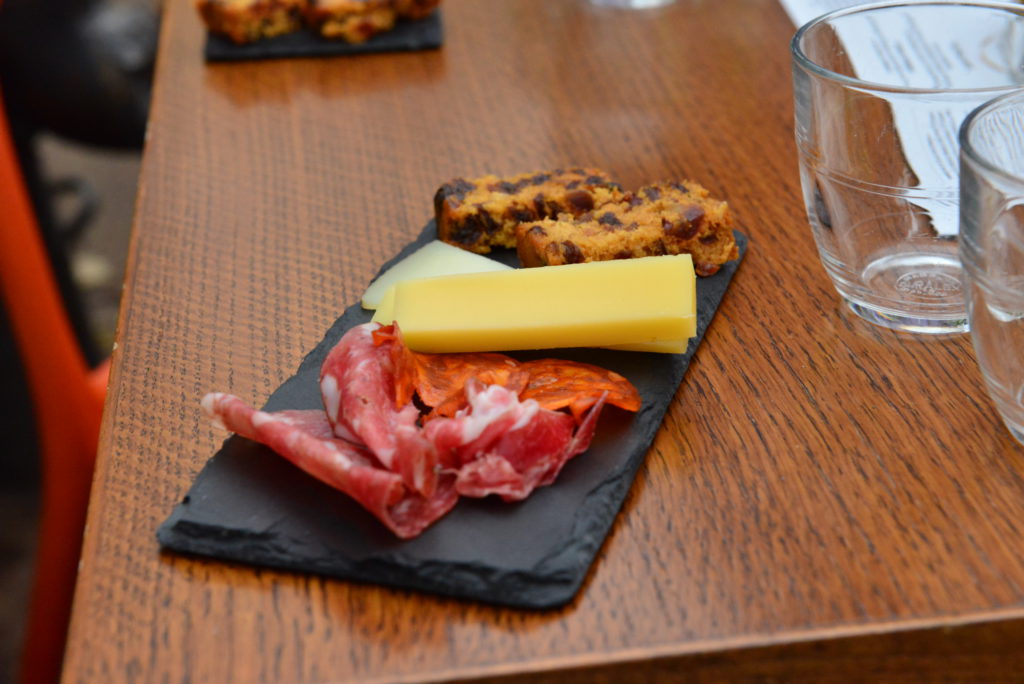
Here in London the flavour of the honey tends to be a bit citrusy, quite light. So as not to lose that flavour she uses raw, unpasteurised honey in the fermentation and the honey feeds the yeast with sugar to convert to alcohol.
We try a bottle of Hiver Blonde with some Manchego cheese. The beer has an aroma of biscuits, and of course, honey. The hoppiness is light, we have hopefully seen the last of over hopped hipster beer and it partners well with the slightly salty cheese.
It also pairs up brilliantly with a slice of fruitcake, something I would never have tried unprompted but now am going to do a lot more.
Another beer Hannah showcases is Hiver IPA. A more earthy flavour and with slightly more bitter notes as you’d expect from an IPA, it goes well with some spicy chorizo making it a good choice for a BBQ drink.
We don’t try the Hiver Brown, the honey used is not from London, but the colour alone is attractive.
Bees are truly fascinating creatures, there are seventeen types including the honeybees, and all are vital to pollination of trees, flowers and most vegetables. We need them to thrive all across the country.
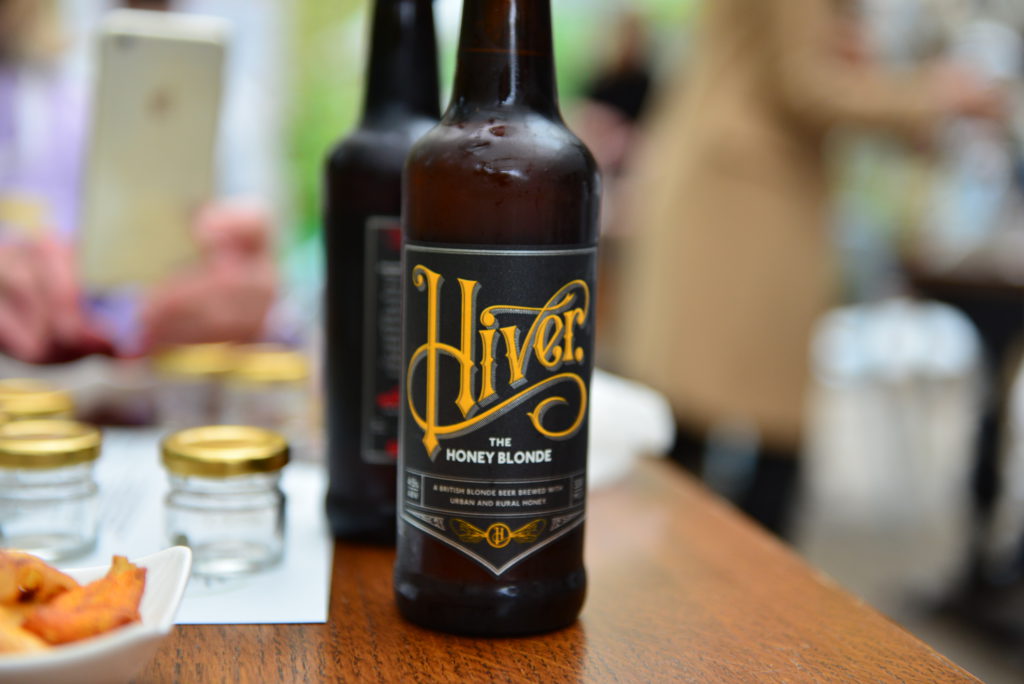
So please, don’t use pesticides on your crops. The odd bit of bug damage is a small price to pay for happy bees.And, of course, great beer.
Bee Urban welcomes volunteers, so take a look at their website to find out more,Hiver Beer is available from Waitrose
